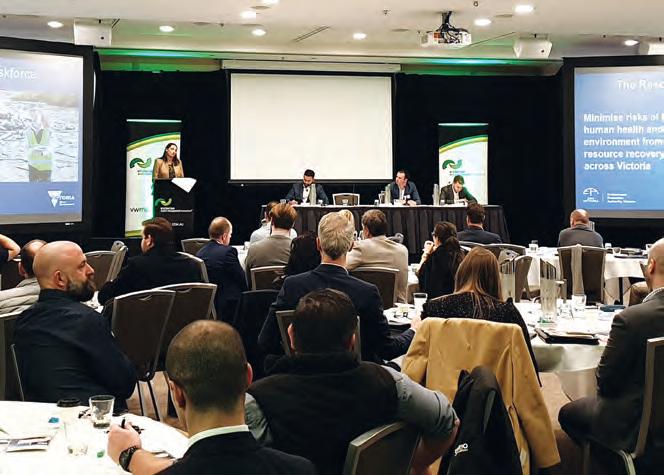
3 minute read
RECLAIMING THE OZONE
AS GOVERNMENTS AND INDUSTRY TACKLE THE ISSUE OF GREENHOUSE GASES, A-GAS RAPID RECOVERY SALES AND MARKETING CO-ORDINATOR KATE PATTERSON WARNS OF A SILENT WASTE CONTRIBUTOR.
Refrigerant, which usually takes the form of a gas or liquid, is a commonly overlooked waste stream. The material is so overlooked in fact, that there is no mention of it in the 2018 National Waste Report.
According to the Australian Refrigerant Council (ARC), domestic end-of-life fridges, freezers and air conditioners represent over 200 tonnes of illegally dumped and potentially discharged refrigerant each year. Adding industrial fridges and construction site cooling systems to that number highlights refrigerant as a kilogram of refrigerant R410a has the same greenhouse impact as two tonnes of carbon dioxide – the equivalent of running a car for six months.
Under the Ozone Protection and Synthetic Greenhouse Gas Management Regulations 1995, all persons handling refrigerant must hold a current Refrigerant Handling Licence, issued by the ARC on behalf of the Federal Government. Recovery companies that comply with licensing and other removal regulations, such as responsible reporting, receive Arctick approval though the ARC.
significant waste stream.
When handled incorrectly, refrigerant can be emitted into the atmosphere where it causes harmful environmental impacts. According to the Department of the Environment and Energy, one
A-Gas Rapid Recovery launched in Australia in 2018.
According to A-Gas Rapid Recovery Sales and Marketing Coordinator Kate Patterson, Arctick compliance is crucial in the refrigerant recovery business, because of the damage fluorocarbon refrigerants can inflict on the ozone layer.
Refrigerant recovery company A-Gas Rapid Recovery launched in Australia in April 2018 following success internationally.
Kate says A-Gas Rapid Recovery are consistently Arctick-compliant and place significant stock in both positive environmental outcomes and workplace safety.
She adds that expanding into the Australian market was particularly important for A-Gas Rapid Recovery, given the country’s problems with the ozone layer.
“The ozone layer here in Australia is noticeably thin and depleted, meaning protecting against the discharge of harmful gases is more significant than ever,” Kate says.
“While hydrofluorocarbon range refrigerants don’t affect the ozone in the same way as fluorocarbon, they’re still a greenhouse gas, and as such, contribute to global warming.”
Kate says when A-Gas Rapid Recovery’s recovery specialists correctly recover refrigerant they remove liability from the customer.
“When a customer books with A-Gas Rapid Recovery we send one of our certified, highly trained technicians out to their site to assess specific application needs,” she says.
“Following this, an A-Gas Rapid Recovery technician will arrive on site to salvage the material using highspeed recovery equipment.”
A-Gas Rapid Recovery also has the technical capabilities to work with
End-of-life fridges represent over 200 tonnes of illegally dumped and potentially discharged refrigerant each year.

councils and large-scale construction projects. Kate adds people would be surprised how much refrigerant exists on a typical building or demolition site.
“Working with domestic clients might seem like a totally different practice than working on a job like kerbside council collection but the process is fundamentally the same, just scaled up.”
Kate says while refrigerant is not often considered in the same problematic waste stream league as soft plastic or glass fines, it is classified as a hazardous material for a reason.
“Refrigerant is not right there in your face, there’s no overflowing refrigerant bins or massive stockpiles,” Kate says.
“But when not recovered correctly, refrigerant can escape into the atmosphere and cause huge ‘invisible’ damage.”
Kate says A-Gas Rapid Recovery documents every step of the removal process including the make, model and serial number for each recovered unit, refrigerant type and material weight.
“We then send the customer a digital copy of the job sheet and can provide an annual Arctick compliance report,” she says.
“Once reclaimed, the refrigerant can be transported to a secure site and safely transformed into substances that neither deplete the ozone layer nor contribute to global warming.”
BEKON® dry fermentation (dry AD) process offers efficient and modular production of biogas and energy from organic waste materials. The ideal solution for councils, waste management companies and agriculture.












